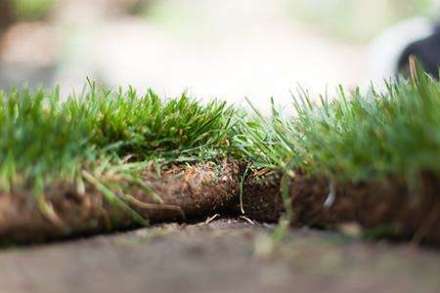Sod is fully developed lawn that has been carefully and
skillfully cultivated, reduce thick squares or rolls using the fundamental soil and roots,
and shipped to some nursery or job site to become laid down to have an “instant new lawn.”
Once sod has become cut, it is best to plant it within round the
clock. If having a distributor, you can order the sod in advance to be delivered on the
specific day. If buying coming from a nursery, make sure the pallets usually are not yellowed which the sod looks moist and fresh. It will wilt and die quickly in hot weather, but
will last a little longer in cool climates. Folks who wants plant the sod immediately keep pallets in shade
and keep them moist.
The cost of growing sod is appreciable. It requires up to couple of years for the grass to mature, during which time it should be taken care of, fed, properly watered, and kept free from disease. It then
must be cut, placed on pallets, and transported. Because of this a sod lawn costs about 20 times more than
developing a lawn yourself from seed, usually any where from 14 – 60 cents per square foot (929 sq. cm). This assumes
you’ll carry out the preparation yourself.
To prepare for your sod lawn, old lawn and weeds must first be removed. The planet earth should be tilled
4 to 6 inches in depth (10 – 15 cm). If an irrigation system is to be installed, it’s done at the moment. If you wish to add organic compounds or fertilizers to the soil, a second pass with the rototiller will work these in. Rake the surface to remove all
roots, rocks and any hard clumps of soil. Make sure the ground is level so that water doesn’t pool in any area of the
yard. You can now roll the soil to firm up the surface. Make sure the soil is dry when you roll it and that the roller isn’t overweight or the dirt will compact. When finished, the final grade should be about 1 inch (2.5 cm) below any
bordering pavement such as patios, sidewalks or walkways. The soil attached to the sod blanket will fill this gap.
Speak with your sod producer or nursery about choosing the right sod for your needs. As an example, some lawns tolerate wear from children and pets better than others. Your climate is also a
major factor as is the composition of your soil. Loam is the best type of soil for lawn in general, but many people have sandy soil or heavy clay. Your sod provider can provide expert help. You can also have your soil tested
for pH and composition discover sure what sort of soil you’ve got.
Sod is heavy and laying it’s not easy work. If you do prefer to lay it yourself, the squares are put side-
by-side, seams butted up against one another tightly without overlapping. The longest straight line along a boundary should be laid first. If you don’t have a
boundary you can use a string line to make sure you lay the lawn straight. After laying 150 square feet (14 square meters) or so, water it lightly to keep it wet. Do
this as you go along. Usually do not wait until the entire lawn is laid. As you lay the adjacent row the
seams should be staggered, as if laying bricks. Sod can be cut to fit around trees or borders.
Once the lawn continues to be laid, make use of the roller on it to determine uniform pressure against the underlying ground. Avoid an excessively heavy roller as it might leave roller tracks.
The most important thing that you
can do for the new lawn even though it is establishing itself in your yard is to water it daily for the first 7-10 days. It
must be kept moist. If the climate is hot you may need to water it twice a day. After it establishes itself, normal watering is fine. People, pets and youngsters should avoid walking on it whenever possible until it features a opportunity to take root. More information about sod Sacramento here.
